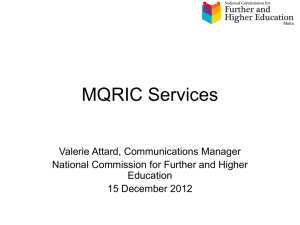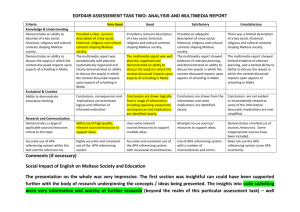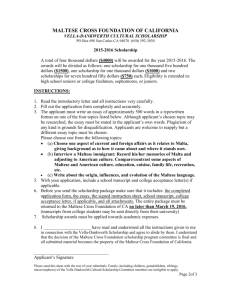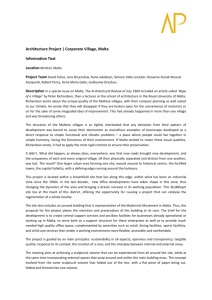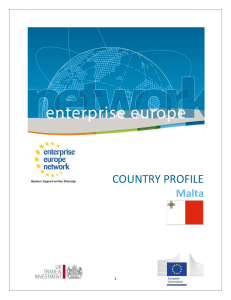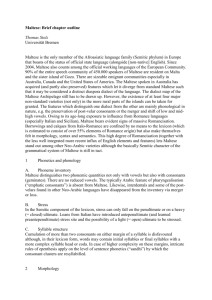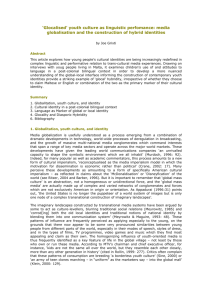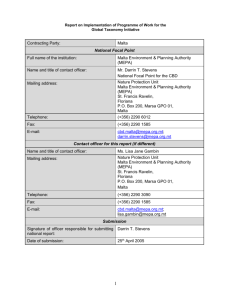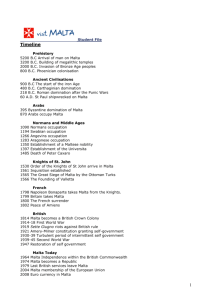Maltese technological steps towards integrative
advertisement
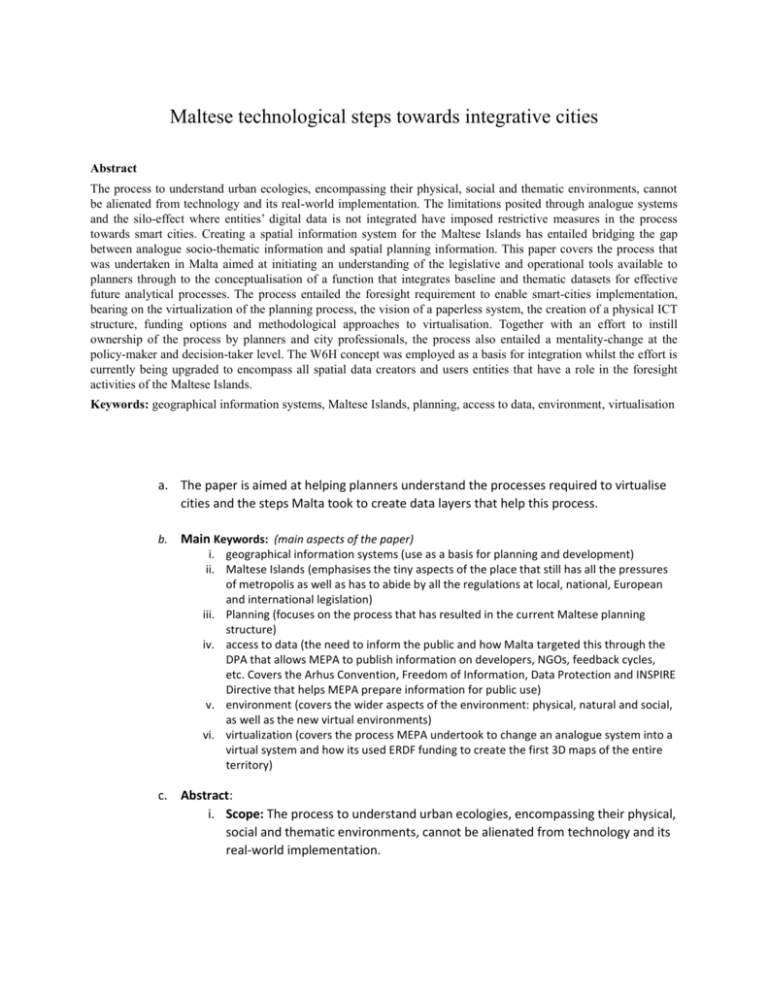
Maltese technological steps towards integrative cities Abstract The process to understand urban ecologies, encompassing their physical, social and thematic environments, cannot be alienated from technology and its real-world implementation. The limitations posited through analogue systems and the silo-effect where entities’ digital data is not integrated have imposed restrictive measures in the process towards smart cities. Creating a spatial information system for the Maltese Islands has entailed bridging the gap between analogue socio-thematic information and spatial planning information. This paper covers the process that was undertaken in Malta aimed at initiating an understanding of the legislative and operational tools available to planners through to the conceptualisation of a function that integrates baseline and thematic datasets for effective future analytical processes. The process entailed the foresight requirement to enable smart-cities implementation, bearing on the virtualization of the planning process, the vision of a paperless system, the creation of a physical ICT structure, funding options and methodological approaches to virtualisation. Together with an effort to instill ownership of the process by planners and city professionals, the process also entailed a mentality-change at the policy-maker and decision-taker level. The W6H concept was employed as a basis for integration whilst the effort is currently being upgraded to encompass all spatial data creators and users entities that have a role in the foresight activities of the Maltese Islands. Keywords: geographical information systems, Maltese Islands, planning, access to data, environment, virtualisation a. The paper is aimed at helping planners understand the processes required to virtualise cities and the steps Malta took to create data layers that help this process. b. Main Keywords: (main aspects of the paper) i. geographical information systems (use as a basis for planning and development) ii. Maltese Islands (emphasises the tiny aspects of the place that still has all the pressures of metropolis as well as has to abide by all the regulations at local, national, European and international legislation) iii. Planning (focuses on the process that has resulted in the current Maltese planning structure) iv. access to data (the need to inform the public and how Malta targeted this through the DPA that allows MEPA to publish information on developers, NGOs, feedback cycles, etc. Covers the Arhus Convention, Freedom of Information, Data Protection and INSPIRE Directive that helps MEPA prepare information for public use) v. environment (covers the wider aspects of the environment: physical, natural and social, as well as the new virtual environments) vi. virtualization (covers the process MEPA undertook to change an analogue system into a virtual system and how its used ERDF funding to create the first 3D maps of the entire territory) c. Abstract: i. Scope: The process to understand urban ecologies, encompassing their physical, social and thematic environments, cannot be alienated from technology and its real-world implementation. Paper will outline the processes MEPA took to understand spaces (Structure Plans, Local Plans, Development Plans, ERDF projects, the planning process, etc) ii. Limitations to current systems: The limitations posited through analogue systems and the silo-effect where entities’ digital data is not integrated have imposed restrictive measures in the process towards smart cities. 1. Mentions the processes MEPA took to move from analogue to digital systems (scanning, the digitalization of the application process, the submission of digital plans, a GIS-based planning process) 2. Mentions also the process we took to map Malta in 3D using LiDAR technology and the ERDF project entitled “Developing National Environmental Monitoring Infrastructure and Capacity” iii. Need for new systems or integration of existing ones: Creating a spatial information system for the Maltese Islands has entailed bridging the gap between analogue socio-thematic information and spatial planning information. iv. Concept of paper: This paper covers the process that was undertaken in Malta aimed at initiating an understanding of the legislative and operational tools available to planners through to the conceptualisation of a function that integrates baseline and thematic datasets for effective future analytical processes. v. Preparing for Smart Cities: The process entailed the foresight requirement to enable smart-cities implementation, bearing on the virtualization of the planning process, the vision of a paperless system, the creation of a physical ICT structure, funding options and methodological approaches to virtualisation. vi. Policy and Decision: Together with an effort to instill ownership of the process by planners and city professionals, the process also entailed a mentality-change at the policy-maker and decision-taker level. vii. The method and Tools: The W6H (Who, What, When, Where, Why, How and Why Not) concept was employed as a basis for integration whilst the effort is currently being upgraded to encompass all spatial data creators and users entities that have a role in the foresight activities of the Maltese Islands. d. Case-study approach: i. A number of case studies will be investigated to help readers understand the processes described above. These include: a. The attempts to digitise the process b. The efforts to bring in legislation to create digital systems c. The implementation of international legislation such as INSPIRE d. The dissemination process e. The 3D outputs and case studies on a number of developments e. The next steps: i. The identification of the next steps that will be taken to expand on this process: a. SIntegraM (the strategic integration of spatial information for the Maltese islands) b. Inter-agency collaboration c. Future preparedness The decision-making depends to a high degree on the availability of the DIKA data process (Data Information - Knowledge - Action). Without base data, the cycle cannot be maintained and resultant decisionmaking may be flawed or based on unsupported assumption. It is imperative that the process is supported by integrated information systems where most agencies collaborate on data sharing and system integration. This needs to be highlighted as a potential Achilles Heel in the decision-making process.


